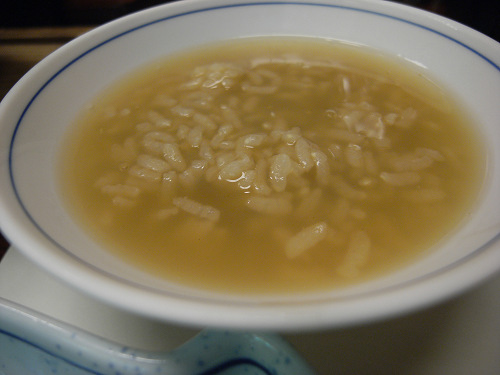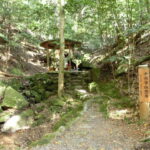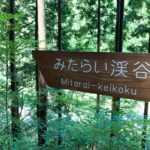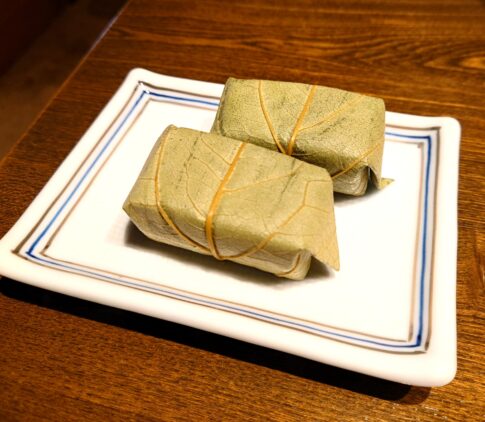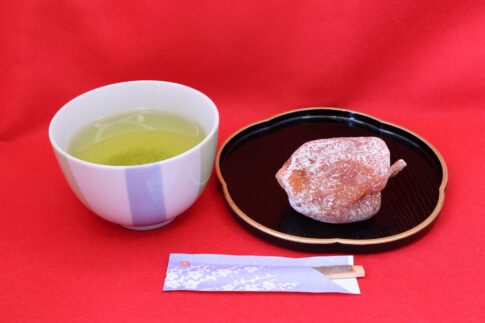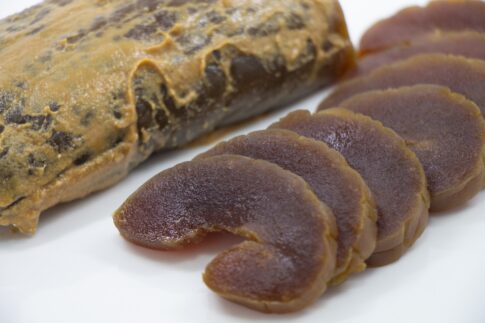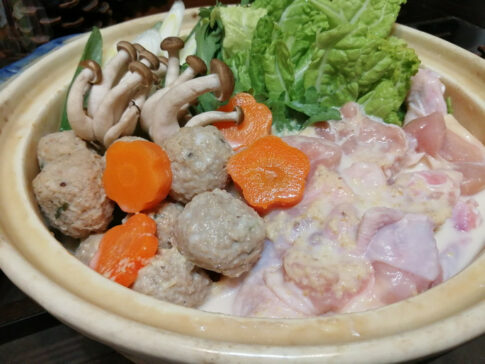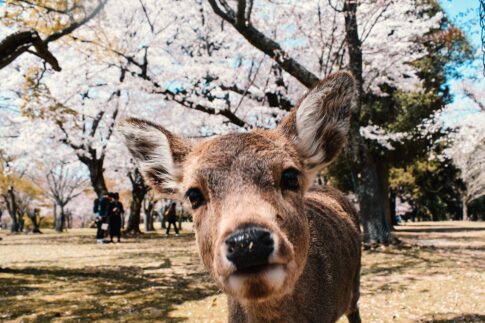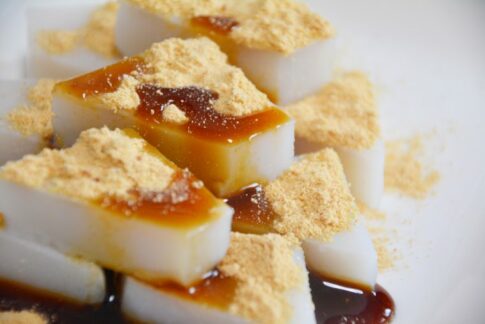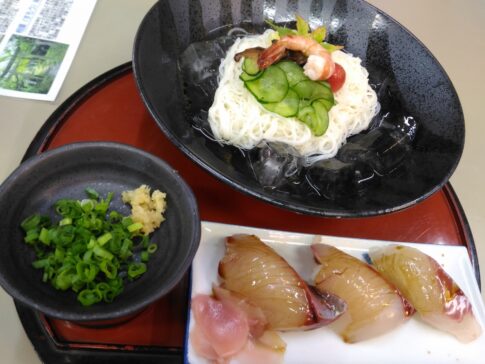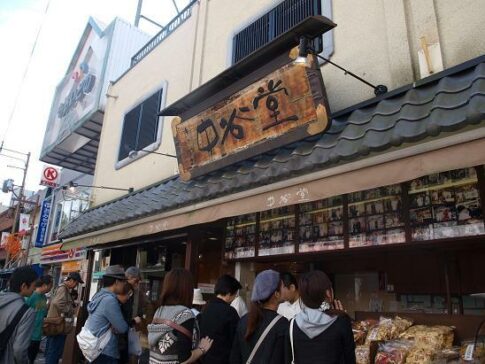Have you ever heard of the word of “chagayu”?
The English word for chagayu is tea porridge.
In Japan, because tea porridge is easily digested and absorbed, it is often considered a food for the sick, the elderly, and baby food, but in some regions it is also considered an everyday food.
Especially in the Kinki region, it was often served as breakfast, and tea porridge was especially favored in the Nara region.
Nara Travelers want to know about Chagayu
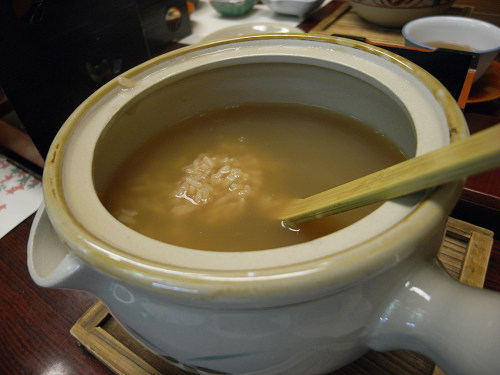
1. Basic Information of Chagayu
- Main areas of transmission
All over Nara Prefecture
- Main Ingredients
Rice, Hojicha (roasted green tea)
- History, Origin, and Related Events
Tea cultivation in Japan is said to have begun in the early 9th century when Kobo Daishi (Kukai) brought back tea seeds from Tang Dynasty (China) and sowed them at Butsuryuji Temple in Uda City.
The “Omizutori” ceremony held at Todaiji Temple every March has a history of more than 1,200 years, and “gobo” and “gecha” appear in the menu of the procession.
Gecha” is rice boiled in hojicha and the liquid removed (like the origin of chameshi: rice boiled with tea and salt), and “gobo” is tea porridge with a lot of liquid.
It is said that people have had it for more than 1,200 years.
- Occasions and Seasons of Food Practice
Tea porridge in Nara, known as “okai-san,” is made by cooking cold rice in boiled hojicha (roasted green tea), and is characterized by its lightness.
It is said that “mornings in Yamato start with tea porridge,” so tea porridge is a typical daily meal in Nara.
- How to eat and drink
Nowadays, few households cook chagayu every morning, but in Yamato, many households cook rice at night, and it is thought that chagayu became widely popular among households because cold rice was eaten warm.
To make it more filling, various ingredients such as sweet potatoes, pumpkin, taro, chestnuts, and kakimochi were added to the porridge.
- Efforts for Preservation and Succession
(Overview of the people who have passed down the tradition, preservation groups, use of SNS, modern efforts such as commercialization, etc.)
Some hotels in Nara Prefecture serve chagayu as a breakfast menu and restaurants in Nara Prefecture also serve it.
In Yamazoe Village, the bamboo tea bags used for boiling tea leaves have been handed down from generation to generation.
2. How to Cook Chagayu
- Ingredients (10 servings)
rice 1 cup
hojicha (roasted green tea) 30g
water 5 cups
salt 1 teaspoon
- Preparation
(1) Cook rice with normal amount of water (not including the quantity of water).
(2) Boil hojicha (roasted green tea).
(3)Add rice and salt to 2 and cook over medium heat, stirring occasionally.
When the desired consistency is reached, it is ready to serve.
(4)Add steamed sweet potatoes or baked kakimochi (rice cakes), etc., as desired.
3. Why We Use Hojicha for Chagayu
Hojicha is a Japanese green tea made by roasting sencha, bancha, or stem tea over high heat until it turns reddish brown.
It is characterized by its fragrant aroma from the roasting process, low bitterness and astringency, and a clean, refreshing taste. It contains low amounts of catechins and caffeine, and is safe to drink for a wide range of people, from children to the elderly, because it is less stressful on the stomach.
In general, hojicha is sold as an everyday tea at a reasonable price, making it a popular tea for many people.
Hojicha is made by roasting sencha or bancha tea leaves.
The heat of roasting increases the amount of “pyrazine” in the tea leaves.
This pyrazine is the source of the aromatic smell of hojicha, but it also dilates capillaries and promotes blood flow.
Some people may feel a warming sensation after drinking hojicha, because not only they have had a warm drink, but also the pyrazine in the tea stimulates blood flow in the body and warms the body.
4. History of Nara and Chagayu
Chagayu is one of Nara’s local dishes.
The recipe is quite simple as mentioned above: Japanese tea (mainly hojicha) is cooked, the tea bag is pulled out, and rice is added.
The trick is to cook the rice lightly so that it does not become sticky.
This home-style dish is widely known throughout western Japan, but it has a particularly long history in Nara.
- Origin dating back to the reign of Emperor Shomu
In the “Kojiruien,” an encyclopedic book of Japanese literature, there is a reference to the fact that chagayu has been popular among the people of Nara since ancient times: “In Yamato, farmers eat chagayu 45 times a day.
In the reign of Emperor Shomu, when the Great Buddha of the Nanto was being built, the people ate kayu and stretched out their rice to help with the construction of the temple, and since then kayu has been used exclusively.
As the description says, “Each households ate kayu,” chagayu was originally a home-cooked dish.
Because of its simplicity as a dish, few restaurants specialize in chagayu, but there are several in the prefecture that offer chagayu with their own unique flavor.
The aroma and taste vary from restaurant to restaurant, and the accompaniments are also very different.
5. Where to Eat Chagayu
- Chatei(Tea House) in Kasugano-cho, Nara City
Please enjoy Nara’s local cuisine, chagayu and “Nara Chameshi,” served with side dishes made from seasonal vegetables grown in Nara.
- Tea Village in Fushikawase, Yamazoe Village, Yamanobe-gun
A restaurant featuring Yamazoe Village’s specialty “Yamato Tea” and local vegetables.
Visitors can enjoy local delicacies of Yamazoe Village such as chagayu, “Cha-somen (green tea noodles),” and “Cha-mabushi (green tea fries). In winter, the warm “cha-cha-cha hot pot” using tea seed oil is popular.
The store and its open terrace offer a spectacular seasonal view, and a wood-burning stove warms the interior during the winter.
- Somen Noodle Shop/Cafe in Kawai, Sakurai City
Healthy and gentle cuisine with seasonal flavors.
Using authentic Miwa somen noodles, the restaurant serves cold somen in summer and nyumen in winter. Please enjoy Yamato Sakurai’s Yamabe set (black rice curry using ancient rice (black rice), Yamabe set (black rice rice ball, mini nyumen, one dish, and coffee), Yamato’s chagayu, and other Yamato Sakurai dishes. Please also try our original local sake, “Ancient Michi”.
Summary
Chagayu is not only delicious but also said to be good for one’s health.
Now is the time to try it, when you visit Nara!
